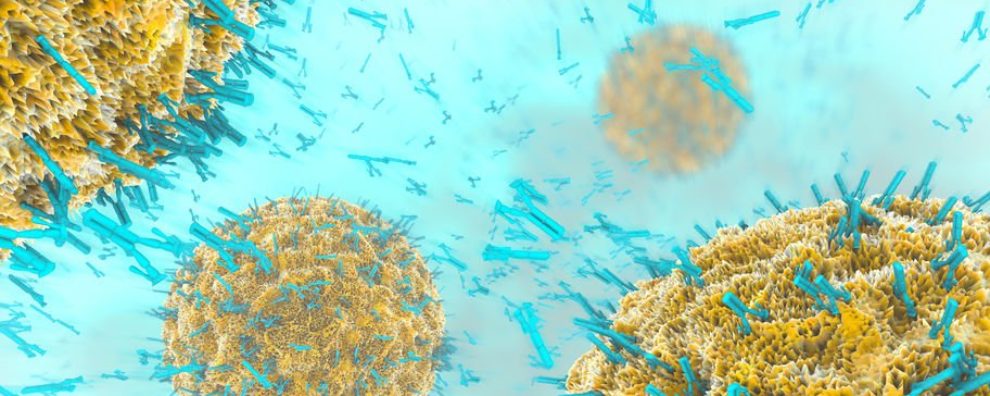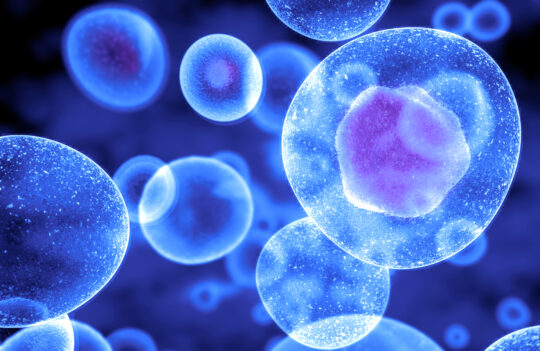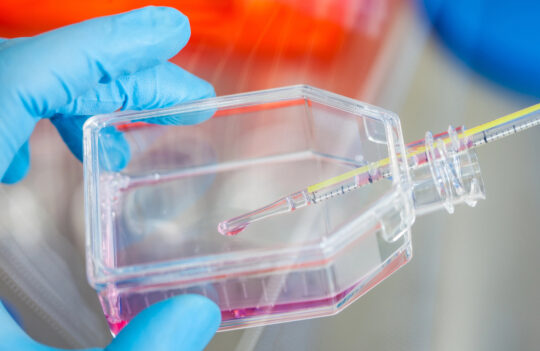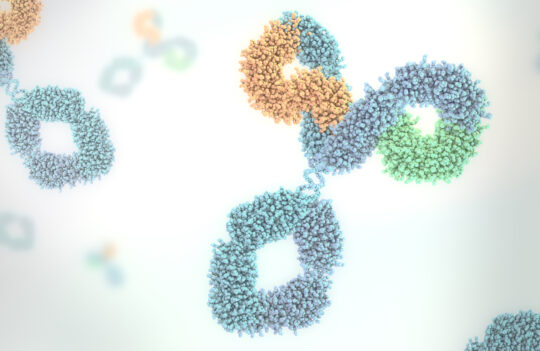 Antibody production
Antibody production
Polyclonal vs. monoclonal: how to choose the best antibodies for your project?
Antibodies are gaining increasing interest from scientists thanks to their unrivaled specificity and sensitivity properties that push the boundaries of several fields of research further, such as therapeutics and diagnostics. Antibody production methods can be used to generate either polyclonal or monoclonal antibodies. Because of their highly different specificities, choosing between the two types of antibodies is an important decision, requiring a good understanding of their respective advantages and drawbacks. This article should help you define the most relevant solution for your antibody production project.
Due to their production mode, monoclonal and polyclonal antibodies present several opposite characteristics. As both methods present their own advantages and drawbacks, various parameters can be taken in account to select the right antibody production mode. These include the purpose, the required test sensitivity, the needed antibody specificity and homogeneity, and the experiment reproducibility. The time and the budget can also influence one’s choice. These criteria therefore imply to have a long-term vision of your project.
To help you make the right decision (and because you might not have the time to read the whole article), we developed a free tool allowing to discriminate not only between polyclonal ans monoclonal antibodies but also to choose the best monoclonal antibody production method between hybridoma development or antibody phage display. Try it by clicking on the button below!
Polyclonal antibodies
Polyclonal antibodies (pAbs) designate a mixture of antibodies obtained from animal immunization against a chosen antigen. This process leads to an important batch-to-batch variability and relies on animal size and lifespan. Polyclonal antibody production provides a variety of heterogeneous antibodies, typically binding several epitopes of the same antigen. This property is particularly useful for the detection of low expression antigens or denatured proteins. In return, it induces a decreased specificity compared to monoclonal antibodies, as some antibodies of the mixture may interact with similar epitopes on other antigens. This can possibly lead to cross-reactions and background noise, which make polyclonal antibodies inappropriate for quantification measurements. This drawback can be circumvented by immunizing the animal with peptides of interest instead of the full antigen. This limits the recognition to one or a few specific epitopes. Polyclonal antibody production is a fast and affordable process, which constitutes a significant advantage over monoclonal antibody production. It can be used for many research applications which do not require a high specificity or a standardized process, and for diagnostics. In the case of ELISA sandwich, pAbs can also be used together with mAbs. The latters bring the specificity, while the pAbs help improving the affinity and make possible the binding with epitopes that remain accessible once captured by the monoclonal antibody.
Monoclonal antibodies
Monoclonal antibodies (mAbs) derive from a single B cell type and target a unique epitope of an antigen. In contrast to polyclonal antibodies, monoclonal antibodies can be selected and isolated based on their specificity and sensitivity features. They can also be engineered for various purposes and allow the generation of new formats, such as bispecific antibodies or antibody-drug conjugates. Their production is amenable to large-scale, highly homogeneous and can be fully standardized thanks to recombinant antibody production. For all these reasons, monoclonal antibodies are particularly appreciated for therapeutic antibody development, such as for any other application requiring large-scale production or standardized process. As mAbs only bind one epitope of a same antigen, tests implying monoclonal antibodies result in a lower sensitivity in detecting antigens than polyclonal antibodies. Their high specificity is a double-edged sword: on one side, it limits cross-reactions and allows quantitative measurements, but on the other side, mAbs are also more likely to become inefficient in case of any little changes affecting the antigen conformation, such as temperature or pH. The two most common methods to produce monoclonal antibodies are hybridoma development and phage display. Contrarily to hybridoma and polyclonal antibodies production, phage display does not necessarily require any animal use, and brings the possibility to develop already human mAbs.
Polyclonal vs. monoclonal: pros and cons
| Polyclonal antibodies | Monoclonal antibodies | |
|---|---|---|
| Advantages | High sensitivity against an antigen
Fast and affordable process The production doesn’t require high technical skills The antibodies can recognize several epitopes of a same antigen Not much affected by small epitope changes Not much affected by pH or temperature variations |
High specificity
High purity High concentrations Unlimited antibody production Poor risk of cross reactions Possibility to do engineering No risk of loss after sequencing Possibility to select the antibody presenting the most appropriate features |
| Drawbacks | Low specificity
Low purity High risk of cross reactions Rely on animal size and lifespan One immunization required by animal Batch-to-batch variation (low reproducibility) |
Longer and more costly process |
| Applications | Many research applications Diagnostics ELISA sandwich | Therapeutic antibody development Biochemical assays Quantification (including FACS) Research applications |



